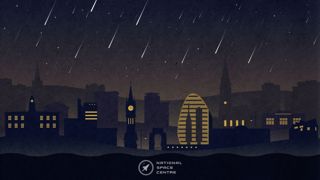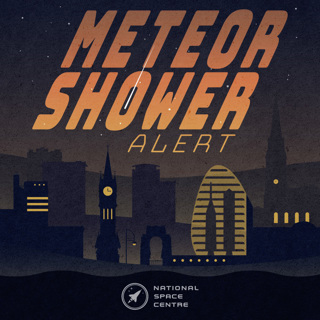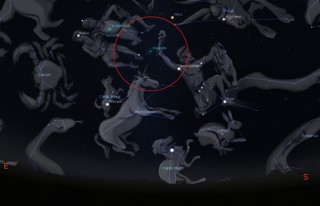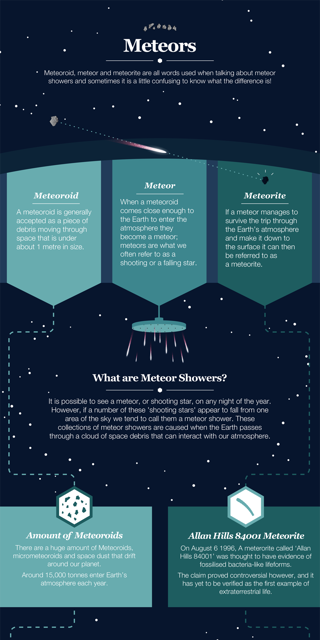
Orionid Meteor Shower 2025
- 24th Sep 2025
- Author: Team Discovery (edited: Dhara Patel)
As we head towards the winter, we're treated to the Orionid meteor shower. This year it will peak overnight from 21-22 October.
Orionid meteor shower
The Orionid meteor shower that we observe in the night sky comes from Halley’s Comet. This comet orbits the Sun ever 76 years or so and when it approaches the Sun the heat vaporises the comet’s ice, causing it to release a trail of gas, dust and microparticles (electrons and ions).
As the Earth orbits the Sun and passes through this debris trail every year, these small space rock burn up as they plough through our planet's atmosphere creating streaks of light that we see as meteors or shooting stars.
The Orionid meteors travel fast – 66 kilometres per second! They’re named as such because they appear to radiate out from a point in the sky which lies in the constellation of Orion the Hunter.
But the meteors of this shower originate from the material left behind by Halley's Comet which orbits our Sun every 75/76 years. Since it last encountered the Sun up close in 1986, it won’t be back until 2061.
But the stream of debris it has left behind, remains for the Earth to pass through each October (and also each May - as the Earth's orbit crosses another part of its debris trail to produce the Eta Aquariid meteor shower.
How to watch from the UK
The meteors will appear all over the sky to the naked eye so there is no need for you to splash out on any expensive tech. To best observe the Orionid meteor shower, you’ll want to get away from city lights, with a clear view of the night sky. On a typical year, the Orionids produce around 10 to 20 meteors per hour during their peak.
The best direction to face is that of the radiant in the constellation of Orion and the time to go out and observe is typically after midnight. Patience is key, as meteor showers involve periods of nothing to see with unpredictable activity in between. It can take some time to spot meteors so make sure you have a comfy chair, some blankets and give your eyes enough time to adjust to the darkness by avoiding bright screens and artificial lights.
The brightness of the Moon can affect the visibility of meteor showers. If the Moon is near full or very bright, it can wash out fainter meteors, reducing the overall visibility of the shower.
This year during the Orionid meteor shower's peak the Moon will be in its new moon phase - which is perfect! Providing it's a clear night without clouds, you should have a good chance of spotting some meteors especially if you can find a dark location away from urban lights.
Meteor Infographic
Download our National Space Centre Meteor Shower Guide to make sure you are fully prepared!
Upcoming meteor showers for 2025 include:
Northern Taurids
Comet of Origin: 2P/Encke
Radiant: constellation Taurus
Peak Activity: 11-12 November 2025
Peak Activity Meteor Count: 5 meteors per hour
Leonids
Comet of Origin: 55P/Tempel-Tuttle
Radiant: constellation Leo
Peak Activity: 17-18 November 2025
Peak Activity Meteor Count: up to 10 meteors per hour
Geminids
Asteroid of Origin: 3200 Phaethon
Radiant: constellation Gemini
Peak Activity: 13-14 December 2025
Peak Activity Meteor Count: up to 150 meteors per hour
Ursids
Comet of Origin: 8P/Tuttle
Radiant: constellation Ursa Minor
Peak Activity: 22-23 December 2025
Peak Activity Meteor Count: up to 10 meteors per hour
Happy meteor-gazing!
Full references / credits:
(Banner image) Meteor showers. Credit: © National Space Centre
(1) Meteor shower alert. Credit: © National Space Centre
(2) Radiant of the Orionid meteor shower. Credit: Stellarium




